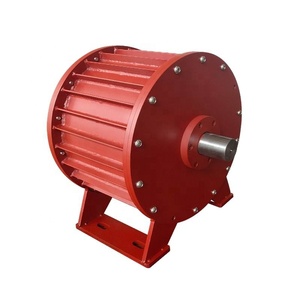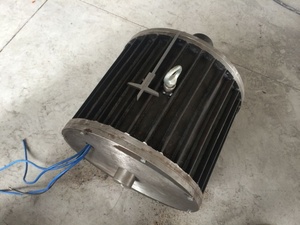
All categories
Featured selections
Trade Assurance
Buyer Central
Help Center
Get the app
Become a supplier

(321 products available)

































Copper winding scrap
Copper winding scrap makes one of the mostly recovered parts scrapped from alternators. Car alternator copper scrap is obtained from the copper wire found within the alternator windings, establishing the magnetic field required for power generation. This wire is recuperated and helps in producing a high quality, pure copper scrap that is used in a variety of applications. Copper is well known for its electrical and thermal conductivity, enabling its utilization in electrical goods, construction, and even renewable energy applications like solar panels. The demand for copper winding scrap remains high because of the metal's sturdiness and recyclability.
Iron and steel case scrap
Iron and steel case scraps come from the housing or shell part of the alternator. The cases are commonly manufactured from iron, steel, or a combination of the two. This part of the alternator is used to enclose and shield the inner components from huge operations, heat, and external elements. When alternators are scrapped down or recycled, the cases made of iron and steel provide valuable metal scrap. Iron and steel case scraps come from the outer coverings on the alternator, hence provide iron and steel, which are utilized in various construction applications, automotive parts, tools, and more due to their sturdiness and ability to resist deformation.
Bearing scrap
Like other components found in car parts, ball bearings found in alternator parts are mostly made from stainless steel. Stainless steel bearing scrap is frequently obtained from the bearings that are used in the internal structure of alternators. Bearings play an important role in reducing friction by allowing smooth rotation of the components. Upon harvesting the bearings from the alternator during the scrapping process, they are recovered as stainless steel scrap. This type of stainless steel scrap is sturdy, resistant to corrosion, and thus recycled for different applications, including again in machinery, automotive parts, and equipment that require high performance and durability.
Magnet scrap
Permanent magnet scraps are recovered from alternators, particularly modern brushless models. Magnets used are then mostly neodymium or ferrite, which have then a strong magnetic field. These magnets are a part of the alternator assembly utilized in power generation. After recycling the magnets from the alternator, they provide unique magnet scraps used in various technological upgrade applications. Neodymium magnets, due to their high strength and versatility, find a wide range of usage in the industries where compact size and strong magnetic fields are required and also in consumer goods like magnetic jewelry, magnetic clasps, and magnetic toys.
Recycling copper wire from alternators
The alternator is a key automotive device that generates electricity to charge the car battery and power electrical systems when the engine is running. It does this using a magnetic field which is established by a wire coil called the rotor. The copper wire found in the rotor is repeatedly magnetized to produce electrical energy called alternating current (AC) through electromagnetic induction. Copper wire is one of the key materials of the auto part responsible for an alternator's operation. This wire uses a high-quality conductor because it is durable and efficient due to its unparalleled electrical and thermal conductivity. Defined by its durability, recyclability, and wide application range, copper wire remains in huge demand.
Steel components in industrial machinery and equipment
The main use of car alternator scrap in industry includes the steel parts in industrial tools, machinery, and equipment. Car alternator steel scrap consists of internal components and steel casings in the rotor, stator, and housing. These are manufactured from high quality, sturdy steel. The housing protects the internal components of the alternator, while the rotor and stator allow the alternator to perform its functions. Steel, a strong and resilient metal, finds its use as a core component in diverse machinery, equipment like bearings, spindles, shafts, and mechanical couplings.
Nickel chrome plating
Nickel chrome plating on scrap alternator carcasses and internal parts enhances durability while also protecting against rust and corrosion. This treatment is prevalent in industries where components are required to resist wear, oxidation, and corrosion over an extended period. This ensures the parts are sustainable, safe to use, and easily disposed of after use. In automotive mechanics, chrome-plated scrap is ideal to be reused as the process reduces cost and minimizes the demand for new materials. The chrome and nickel coating also have a monetary value which can be advantageous during their collection and recycling.
Turbine components
Aside from habitual usage in auto parts, stainless steel bearings are also used in turbines, which are machines that convert fluid energy into mechanical energy. This thus allows them to produce either electricity or pump fluid. The components are commonly utilized in hydro, steam, and gas turbines, which all draw kinetic energy from water or steam to generate power. Car alternator scrappers can extract stainless steel bearings and shafts which can be used in assembling different kinds of turbines.
Assess copper content
Make sure the alternator in the car has a high copper winding content while the copper wires used in modern alternators are thicker and finer. Usually, double copper windings represent better quality because they improve electrical conduction. In case it is not possible to get a new copper alternator, use one from a higher-end vehicle or a model with less electronic complexity. Simple alternators have better copper wiring due to fewer components. Focus on getting pure copper instead of copper-clad aluminium (CCA). The latter has inferior conductivity. Avoid rusty or corroded wires, as they support the wiring's structural integrity and reduce its conductivity.
Check for solid-state components
Ensure the alternator has few or no solid-state components. Many modern vehicles use electronics instead of mechanical devices. Avoidal car alternators that contain brushless models. These alternators use electronic controllers instead of mechanical brushes to provide power to the alternator. This reduces electrical interference while also enhancing reliability. However, it lowers the copper content because some of the models use aluminium or lower-grade metals. Prefer older alternators with mechanical parts like brushes and rotating fields.
Inspect housing
Take a look at the alternator housing material. Most manufacturers nowadays prefer making alternator housings from aluminium. This is mainly due to the lightweight and corrosion-resistant properties of the metal. At a lower price, consumers can get alternators with steel housings. This is due to their strength and the fact that they can be easily recycled. Steel is usually heavier than aluminium, but it is also strong. Also, focus on the condition of the housing. A worn-out or corroded alternator will contain less copper due to exposure to harsh elements.
Assess brand and model
Ensure the car alternator is from renowned manufacturers such as Bosch, AC Delco, or Nippondenso. These companies use quality copper windings in their models. Before making the purchase, look for the year, make, and model of the vehicle to know the kind of alternator that was used.
A1: Initially, the scrap is sorted based on its type and purity. It is then cleaned to remove contaminants such as plastic insulation, corrosion, or non-metallic materials. After the cleaning, the scrap is shredded into smaller pieces, making it easier to process. Subsequently, it is melted down in specialized furnaces. The molten metal is then refined to remove impurities.
A2: When collecting car alternator scrap, use sturdy metal containers like bins or barrels. Ensure the containers are dry and well-ventilated to prevent rusting or corrosion of the metal. Avoid storing the alternators in damp areas as this promotes oxidation. If the alternators have electrical components, ensure the item is removed to avoid hazardous substances exposure. Place a tarp or cover over the containers to avoid water and debris accumulation.
A3: Corrosion on car alternator scrap includes visible rust. This occurs as a result of orange or reddish-brown spotting on steel or iron parts. Affected areas may look pitted or have flaking residue. Sacrificial anodes attached to the alternator will be corroded. Sometimes, there is discoloration or white powdery substance, especially on zinc or magnesium components. Look at the weakening or structural integrity loss as there is brittleness, flaking, or cracking.
A4: If the alternators are left in the environment, they will lead to resource depletion as it result in the need for more raw materials to manufacture new alternators. There is energy consumption during the mining of raw materials which engages greenhouse gas emission. Alternators contain hazardous materials like lead, mercury, or cadmium. They will lead to soil and water contamination when released into the environment. By disposing of the scraps inadequately, the useful metals will flow decrease in the ecological system, hence reducing biodiversity.